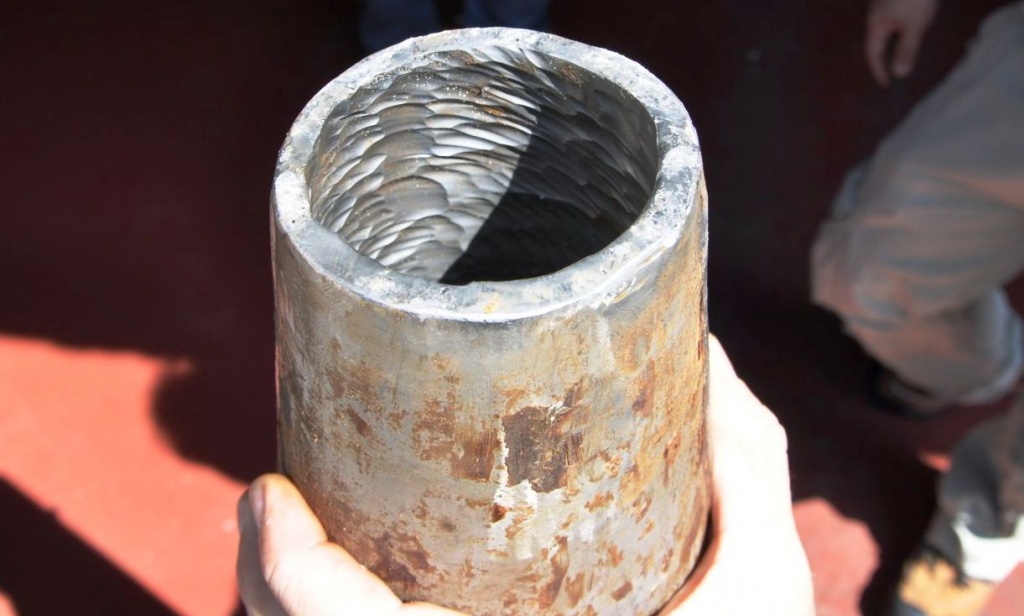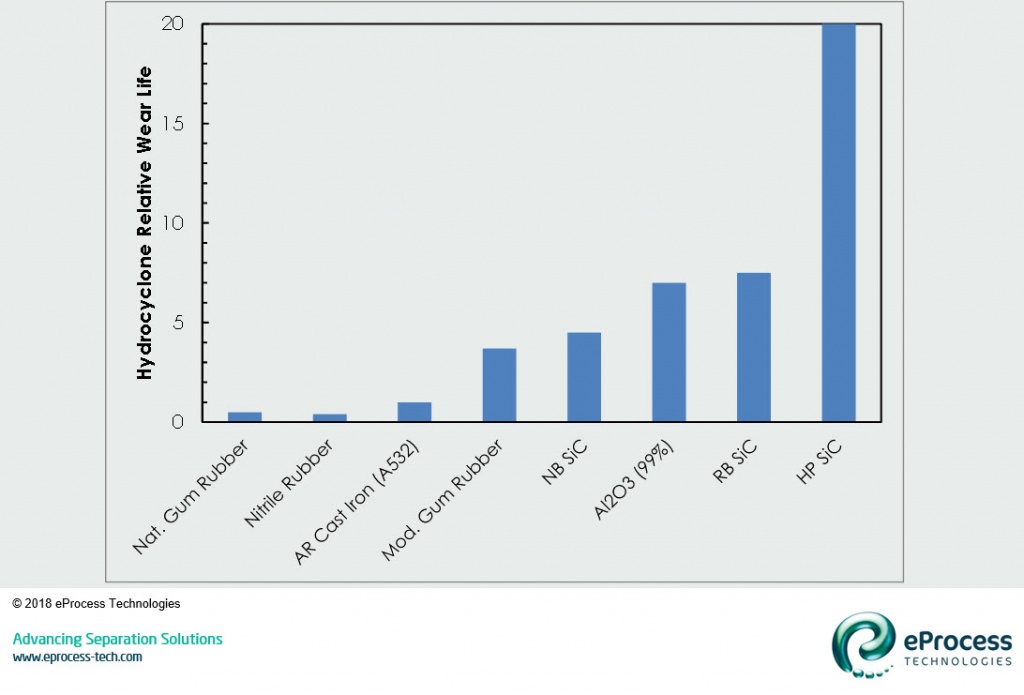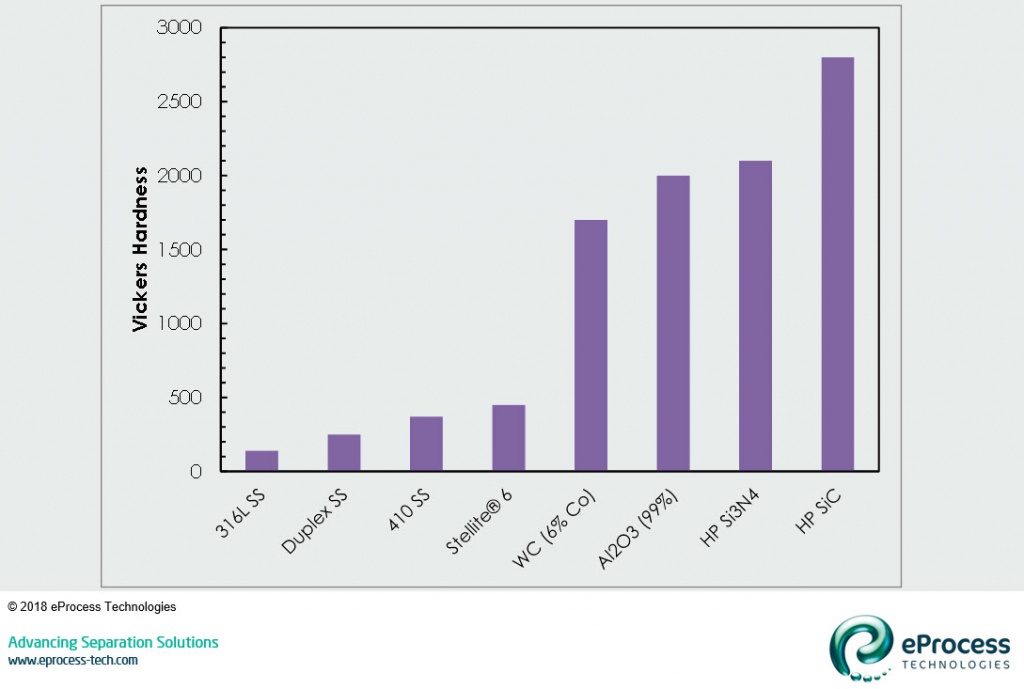Liquid Desander – Erosion and Wear Life (B-FSM070)

All desanders will be subjected to erosive wear, since they are treating a solid-liquid slurry traveling at high-velocity. The design of the desander should always be such that the erosive wear is directed, and limited to, the replaceable component, and never to the pressure-vessel housing. The erosion should be contained to the insert or liner contained within the pressure vessel. The cyclonic liner or insert is a consumable item. It is (or should be) designed as replaceable.
There is not simple or convenient method of calculating the useful life of a cyclone insert or liner. The only suitable method is to try a material, measure the wear-life, then try a different material. The trial-and-error method can provide a wear index for material/cost comparison.
The difficulty in calculating a wear-life of the internal component is due to the large number of variables that are difficult to measure. These include characteristic velocity, number of particles, particle trajectory, particle size and distribution, particle morphology and hardness, and time.
Material selection is the primary mode of erosion containment. The insert or liner is fabricated from a material to provide a suitable wear life. The liner will eventually wear out and need replaced, and the material selection is normally a financial decision.
The charts below provide some guidelines in material selection. These are taken from work I did in the early 1990s to test the wear life of various materials in mining hydrocyclones. The first chart shows hydrocyclone relative wear life. This does not provide an absolute time value for wear, but a normalized comparison. The groups of materials are polymer, metal, and ceramic. The baseline value is white cast iron (ASTM A532) with a value of 1.0. Natural and nitrile rubber have less than half the wear life, while modified gum rubber (highly vulcanized) has a much longer wear life. The best material class is ceramic, with silicon carbide (SiC) and alumina (Al2O3) reaching 5-20 times the wear life. For use in the oil and gas industry, rubber is not suitable for use due to both operating temperature and swelling from hydrocarbon components.

A comparison of material hardness, in the graph below, shows a similar trend to relative wear life. In general the harder the material the longer the useful life. This chart compares Vickers hardness for various metals and ceramics. 410 stainless steel and Stellite® are both good wear resistant metals, and have 2-3 times the hardness of 316L SS. Both 410 and Stellite are commonly used for metallic desander inserts. Ceramic material offer the highest wear resistance, with alumina and silicon carbide the most commonly used for desander liners.

A summary of recommendations for material selection is listed below.
Metal:
- Can be fabricated or cast into intricate shapes – both small and large
- Moderate cost
- Suitable for all temperature, pressure, and most chemicals exhibited in upstream oil and gas
- Can be surface modified (i.e. carbonized, borodized, plasma spray, etc.) for further wear life
- Tough and robust for handling and operation
Ceramic:
- Can be cast into intricate shapes – but small size only
- Moderate-high cost
- Suitable for all temperature, pressure, and chemicals exhibited in upstream oil and gas (inert to most anything)
- Cannot be surface modified
- Brittle and requires special care in handling and operation to prevent breakage
The cost benefit of metal vs. ceramic must be researched for each application.
The next article will discuss operating boundaries in liquid desanders.
References:
- Svarovsky, L. 1984. Hydrocyclones. Technomic Publishing Co., Inc. Lancaster, PA, USA.
